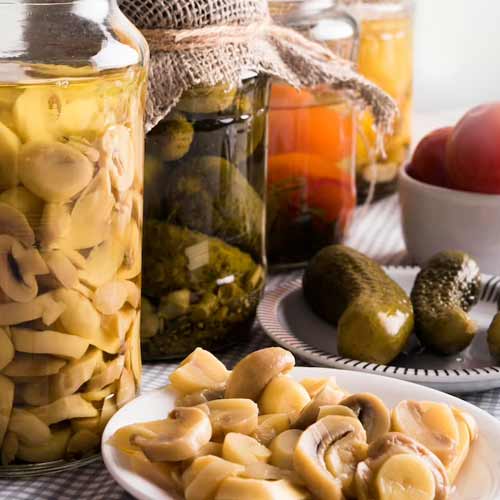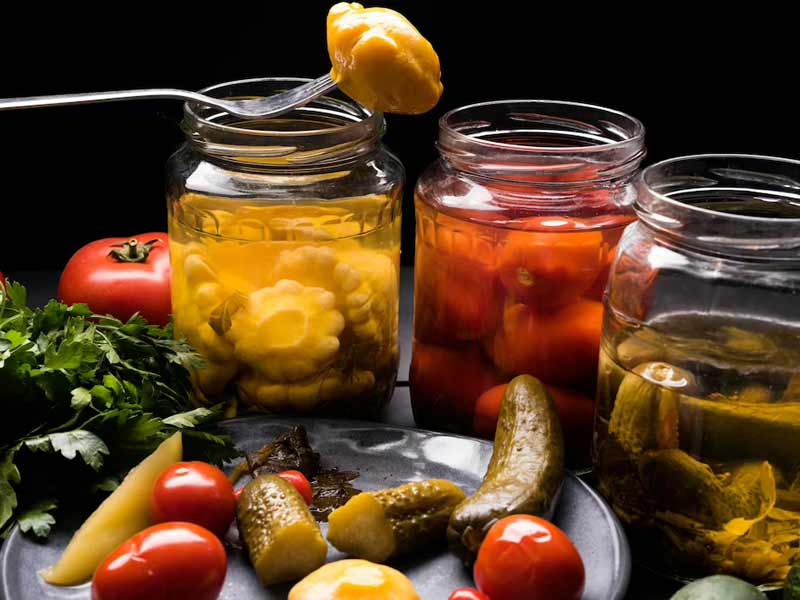Steam canning is an innovative method of food preservation that offers several advantages over traditional water bath canning. It provides a safe and efficient way to preserve a wide variety of fruits, vegetables, and even some high-acid foods. In this article, we will explore the concept of steam canning, its benefits, and how to successfully implement this technique in your home canning routine. So, let’s dive in and discover the wonders of steam canning.
Understanding Steam Canning and Its Benefits

It is a modern approach to food preservation that utilizes steam to create a high-temperature environment within the canning jars. This method offers several benefits, including shorter processing times, reduced energy consumption, and increased nutrient retention. Additionally, it is suitable for both high-acid and low-acid foods, providing a versatile option for home canners. You can Learn Benefits of Canning.
The Science Behind Steam Canning

It relies on the principle of heat transfer through steam. As the jars are exposed to steam, heat is transferred to the food inside, effectively killing bacteria, yeasts, and molds. The steam also helps create a vacuum seal, ensuring the long-term preservation of the canned goods.
Essential Equipment for Steam Canning
To engage in steam canning, you will need a few essential pieces of equipment. These include a large pot with a tight-fitting lid, a rack or basket to elevate the jars, canning jars with appropriate lids and bands, a steam canner thermometer, and basic canning tools such as jar lifters and a ladle. You can learn Storing Canned Food.
Step-by-Step Guide to Steam Canning
- Prepare your jars, lids, and bands by washing them in hot, soapy water. Rinse thoroughly.
- Place the rack or basket in the bottom of the steam canner and fill it with the required amount of water.
- Place the canner on the stovetop and heat the water until it starts to produce steam.
- Fill your jars with prepared foods, leaving the recommended headspace.
- Carefully place the filled jars onto the rack or basket, ensuring they are not in direct contact with the water.
- Cover the canner with the lid and monitor the temperature using the steam canner thermometer.
- Maintain a steady stream of steam for the required processing time, adjusting the heat as needed.
- Once the processing time is complete, turn off the heat and let the canner sit for a few minutes.
- Carefully remove the jars using jar lifters and place them on a towel-lined surface to cool.
- Allow the jars to cool undisturbed for 12 to 24 hours. Check the seals and store the properly sealed jars in a cool, dark place.
Safety Precautions and Best Practices
While it offers many advantages, it’s important to follow safety precautions and best practices to ensure the quality and safety of your canned goods. Some key guidelines include:
- Always use tested recipes from reliable sources.
- Follow recommended processing times and temperatures.
- Check jar seals before storing the canned goods.
- Store the canned goods in a cool, dark place.
- Regularly inspect and maintain your canning equipment.
Steam Canning vs. Water Bath Canning: A Comparison

Its and water bath canning are both popular methods of home food preservation. While they share similarities, such as using glass jars and heat processing, there are notable differences. It requires less water, shorter processing times, and is suitable for a wider range of foods. Water bath canning, on the other hand, uses a large pot of boiling water to create the high-temperature environment. Both methods have their advantages and can be chosen based on the specific foods being preserved.
Recipes Perfect for Steam Canning
It is suitable for preserving a variety of foods. Some popular recipes that can be adapted for steam canning include fruit jams and jellies, pickles, salsas, and high-acid fruits such as peaches and tomatoes. Always ensure that the recipe you choose is specifically developed and tested for steam canning.
Troubleshooting Tips for Steam Canning
While it is a reliable method, you may encounter some challenges along the way. You can learn Troubleshooting Canning. Here are a few troubleshooting tips to help you address common issues:
- If jars don’t seal properly, check for any chips or cracks on the jar rims and use new lids for reprocessing.
- If foods are underprocessed, make sure the processing times and temperatures are followed accurately.
- If foods become discolored or have changes in texture, review the recipe and processing guidelines to ensure proper preparation.
Conclusion
Steam canning offers a modern and efficient approach to preserving food at home. With its shorter processing times, energy savings, and versatility, it’s worth considering as an alternative to traditional water bath canning. By following proper techniques, ensuring safety precautions, and exploring delicious recipes, you can embark on a successful its journey and enjoy the benefits of freshly preserved foods.
FAQs
- Can I use steam canning for low-acid foods?
- Yes, steam canning is suitable for both high-acid and low-acid foods. However, it’s essential to use reliable, tested recipes specifically designed for steam canning when preserving low-acid foods.
- How long do I need to process jars using steam canning?
- Processing times can vary depending on the recipe and altitude. Always follow the recommended processing times provided in tested steam canning recipes or reputable canning resources.
- Can I reuse lids when steam canning?
- No, it is notrecommended to reuse lids when steam canning. It’s best to use new lids for each canning session to ensure a proper seal and reduce the risk of contamination.
- Is steam canning safe?
- Yes, steam canning is considered a safe method of food preservation when proper guidelines and recommendations are followed. It’s important to use tested recipes, maintain the correct processing times and temperatures, and inspect jars for proper seals before storing.
- Can I adjust the processing time for steam canning?
- Processing times for steam canning are specific to each recipe and must be followed accurately to ensure food safety. It’s not recommended to adjust the processing time unless you are using a recipe specifically developed and tested for steam canning with adjusted guidelines.
By embracing steam canning, you can enjoy the convenience and efficiency of this modern preservation method. Follow the outlined steps, stay informed about safety practices, and explore the wide range of recipes available for its. Preserve your favorite fruits, vegetables, and more with confidence and savor the flavors year-round.
We proudly present: 1TouchFood, a website specifically designed for online cooking education. Our platform offers a diverse range of culinary tutorials, aimed at teaching aspiring chefs and cooking enthusiasts the art of cooking from the comfort of their own homes. Whether you’re a beginner or an experienced cook looking to expand your culinary repertoire, 1TouchFood provides step-by-step video lessons, interactive recipes, and expert tips to enhance your cooking skills.
Our dedicated team of professional chefs and culinary experts have meticulously crafted each lesson to ensure a seamless and immersive learning experience. Join us on 1TouchFood and unlock your potential in the kitchen as you embark on a culinary journey filled with flavors, techniques, and newfound inspiration.
Please follow us on linkedin. You can learn all best canadian food recipes you can check our Culinary 1TouchFood Youtube and Telegram 1TouchFood page. Don’t forget Fighting Obesity Magazine and Radio Cooking.

